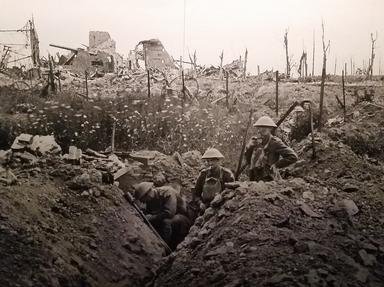Quiz Answer Key and Fun Facts
1. The U.S. Army's WWI 369th Infantry Regiment was comprised primarily of volunteers from which U.S. state?
2. The soldiers of the 369th called themselves "The Bronze Men". Others also called them the "Black Rattlers". What did the Germans call them?
3. Who was the commanding officer of the 369th?
4. The first black man to lead men into battle during WWI was with the 369th. Who was he?
5. Gen. John J. "Black Jack" Pershing, leader of the American Expeditionary Forces, was not willing to integrate the black and white American fighting forces. Instead, he lent them to which country?
6. The entire 369th was awarded the French Croix de Guerre for capturing which village in northern France?
7. In May, 1918, two men from the 369th were involved in a skirmish with a German raiding party in the Argonne. One of these men was Private Needham Roberts. This battle took on the name of the other black soldier. It became known as whose war?
8. The hero whose private war played out that May night in the Argonne died in 1929 how?
9. The 369th was the first unit to arrive in France and the first to return home. How many months, approximately, did they serve in combat?
10. Race was a volatile issue during WWI, not only in the Army but also throughout civilian communities. Before they shipped off to France, where did the men of the 369th receive combat training?
Source: Author
JudithCrafard
This quiz was reviewed by FunTrivia editor
gtho4 before going online.
Any errors found in FunTrivia content are routinely corrected through our feedback system.

